Art
Ronald Lauder’s lifelong art collection now on display
|
|
NEW YORK — Don’t ask Jewish philanthropist Ronald S. Lauder to choose a favorite from his vast art collection. He can’t. That’s because for the past several decades he’s collected only those pieces he really, really likes.
When acquiring a piece, Lauder, the youngest son of the cosmetics giants Estée and Joseph Lauder, uses what he calls the “Oh-My-God Formula.”
“It goes like this: There is the ‘Oh,’ which means that when I see the piece, it is just not that important. Then there is the ‘Oh My,’ which means it’s a good piece, just not one of the artist’s best works. But then, there is the very rare ‘Oh My God,’ which is one of the artist’s truly great pieces,” Lauder wrote in an introduction to “The Ronald S. Lauder Collection” exhibition catalog for an exhibition of a few of his favorite things at New York’s Neue Galerie.
“Those are the pieces, the Oh My God works of art, that I have collected over the course of 65 years. I will note here that an Oh My by a great artist will always remain just an Oh My. But an Oh My God (or OMG in today’s parlance) by a lesser artist could make that person a great artist someday.”
The public can now see some of Lauder’s OMG pieces at the Upper East Side’s Neue Galerie, which Lauder founded in 2001. In honor of the museum’s 20th anniversary, 500 pieces of Lauder’s personal collection are on display through February 13, 2023.
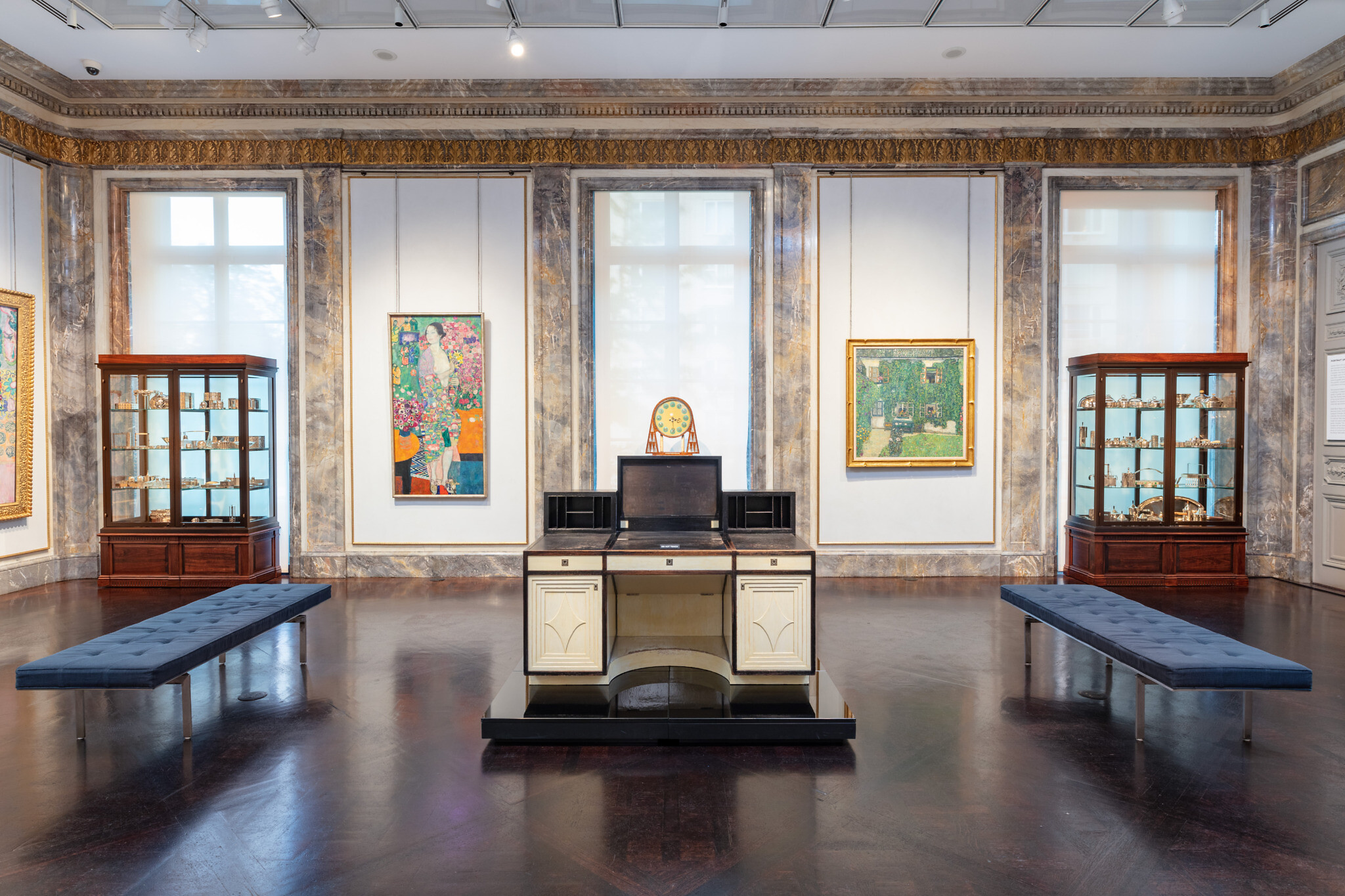
Installation view of ‘The Ronald S. Lauder Collection’ on view at Neue Galerie New York. (Hulya Kolabas/ Courtesy of Neue Galerie New York)
The collection of the 78-year-old former ambassador to Austria during the Reagan administration and current president of the World Jewish Congress is as diverse as it is impressive. There are several sterling silver kiddush cups, masterworks of Greek and Roman sculpture, and a number of Italian 13th- and 14th-century gold-ground paintings.
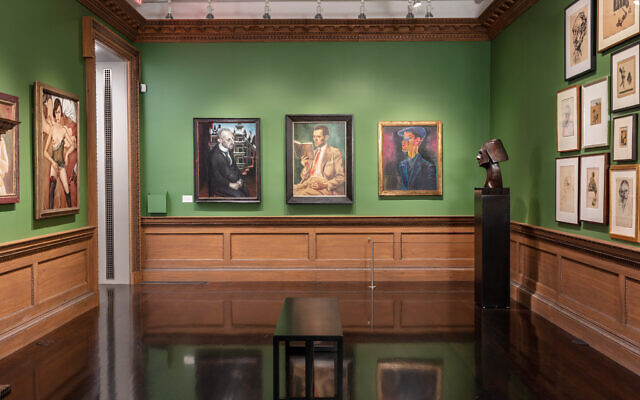

View of the ‘Green Room’ at ‘The Ronald S. Lauder Collection’ on view at Neue Galerie New York. (Hulya Kolabas/Courtesy of Neue Galerie New York)
Beyond the dizzying array of treasures, what makes this show unique is the pains the museum took to transform its two gallery floors into a space evocative of Lauder’s home.
“He lives with his art and so we re-recreated his rooms. He, and we, invite the public,” said Neue Galerie director Renée Price.
“It’s a very eclectic and highly personal collection that reflects his lifelong passion and pursuit of art. There is nothing that equals this. It’s a once-in-a-lifetime exhibit,” said Price, nodding toward the gallery in which Medieval suits of armor stand sentinel.
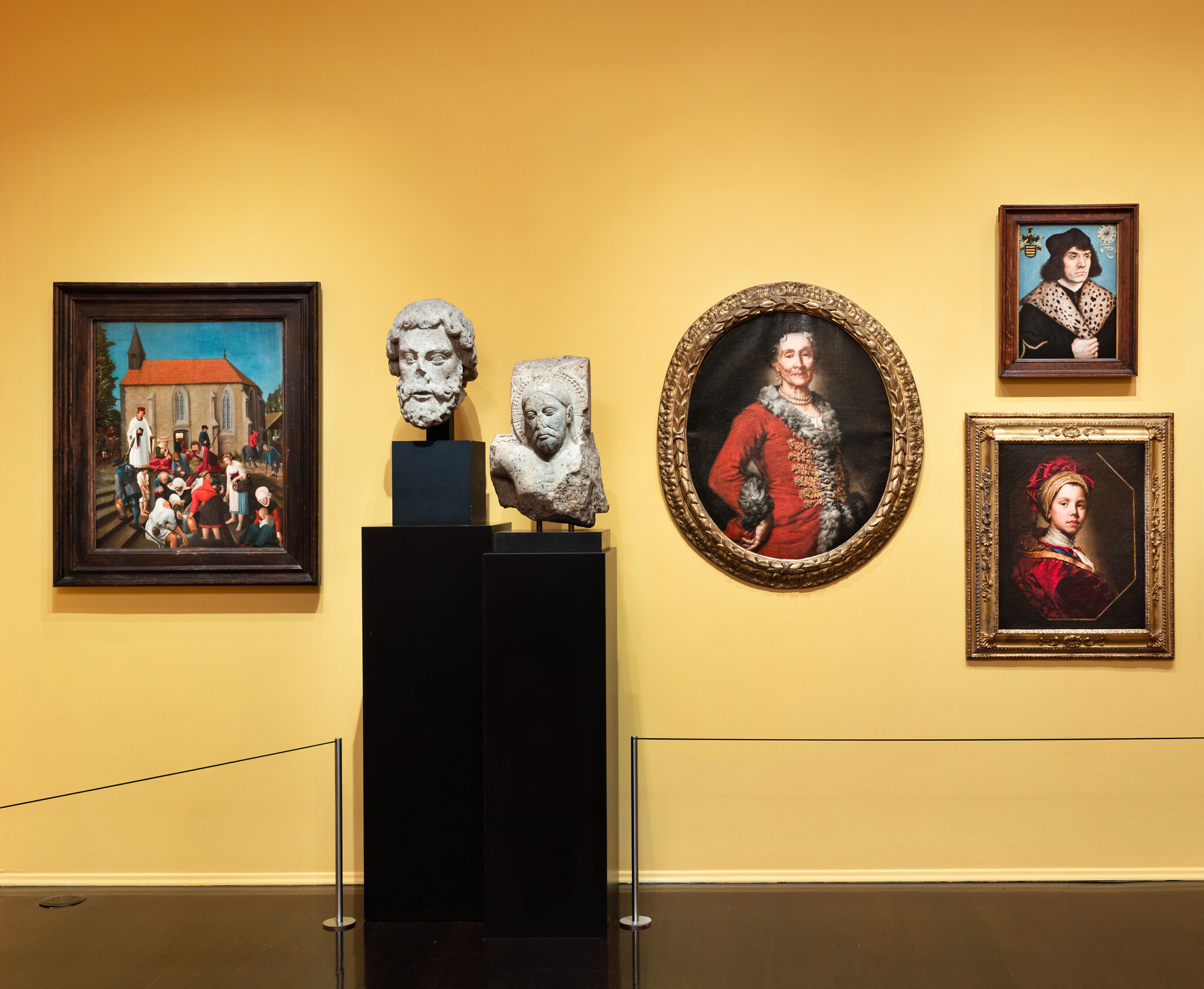

View of the ‘Yellow Room’ at ‘The Ronald S. Lauder Collection’ on view at Neue Galerie New York. (Hulya Kolabas/Courtesy of Neue Galerie New York)
As one of the foremost collectors of Medieval and Renaissance arms and armor in the world, Lauder donated nine objects from his collection to the Metropolitan Museum of Art in December 2020. On display now at the Neue Galerie are complete suits of armor, shields, and mail shirts as well as daggers, crossbows and swords.
In one gallery, the wall is painted the exact shade of yellow as in his home. In another, one of the paintings Lauder treasures most — Erich Heckel’s 1908 “Bathers in a Pond” — hangs above an intricately carved wooden mantle. The mantle and the similarly carved wainscotting and molding in the room are reproductions of those in Lauder’s living room.
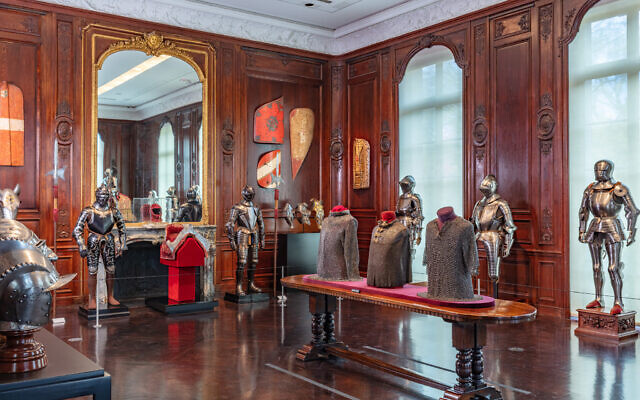

View of suits of armor at ‘The Ronald S. Lauder Collection’ on view at Neue
Galerie New York. (Hulya Kolabas/Courtesy of Neue Gale York)
The knights who say ‘NY’
The exhibit was one of the museum’s more challenging. Because the Gilded Age mansion has no freight elevator, several pieces were hoisted through the building’s narrow windows. It’s no surprise that crowds gathered on the sidewalk and watched as medieval suits of armor and giant bubble-wrapped marble busts seemed to float through the air.
Since its wrought iron doors first opened, the museum has held nearly 50 shows highlighting Austrian and German art of the 20th century. However, the museum is best known for Gustav Klimt’s “Portrait of Adele Bloch-Bauer I,” which occupies a permanent space just past the sweeping staircase.
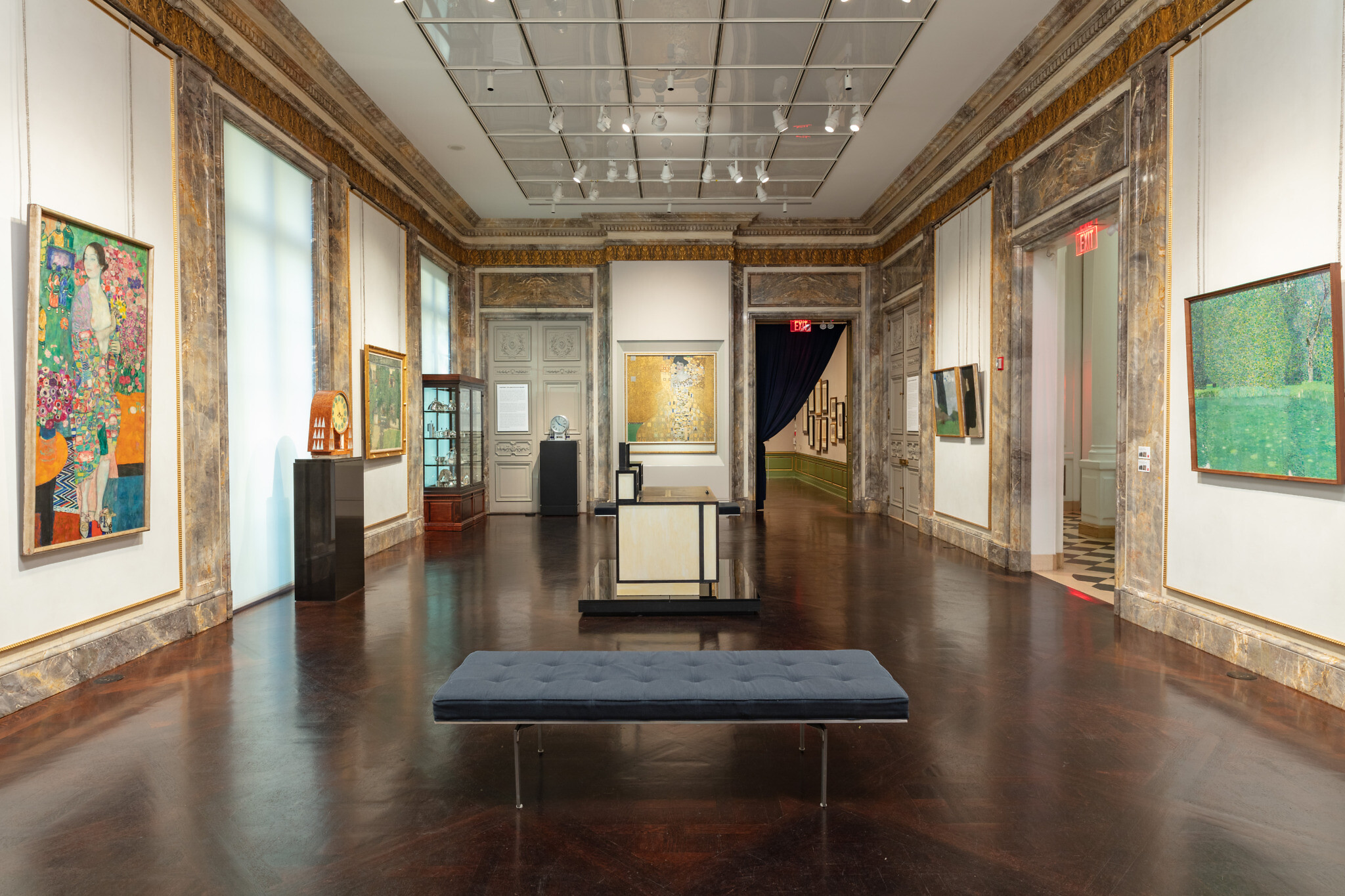

Installation view of ‘The Ronald S. Lauder Collection’ on view at Neue Galerie New York. Gustav Klimt’s ‘Portrait of Adele Bloch-Bauer I’ can be seen at the center back. (Hulya Kolabas/Courtesy of Neue Galerie New York)
One of the most interesting pieces in the exhibition might not be an actual work of art — rather it’s the replica kunstkammer, or art cabinet, which holds an assortment of objects, including Jewish ritual objects such as a havdalah spice box and a Torah breastplate. The cabinet is fashioned after the one Lauder designed for his own home.
A creamy white-marble statue of Hermes from the second century CE occupies a corner designed to look like Lauder’s private office. Nearby is a head of a Greek goddess, dated 150 BCE. It normally sits on Lauder’s Art Deco walnut desk, which here in the exhibit has been left bare save for the Alberto Giacometti table lamp.
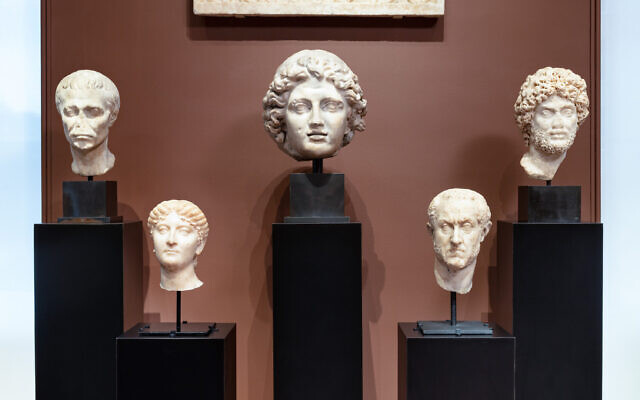

Installation view of ‘The Ronald S. Lauder Collection’ on view at Neue Galerie New York. (Hulya Kolabas/Courtesy of Neue Galerie New York)
It is perhaps the small, corner gallery devoted to memorabilia from Lauder’s favorite film “Casablanca” that is as unexpected as it is relatable.
“As Time Goes By” performed by the pianist Dooley Wilson plays softly, and repeatedly, in the background. A bejeweled brass lamp sits atop a table, both of which are movie props for Rick’s Café. The original passports designed for actors Ingrid Bergman and Paul Henreid hang on the wall next to their transit papers. Among the dozens of framed vintage posters is one of Ingrid Bergman wearing an ice-blue silk gown and pink gloves.
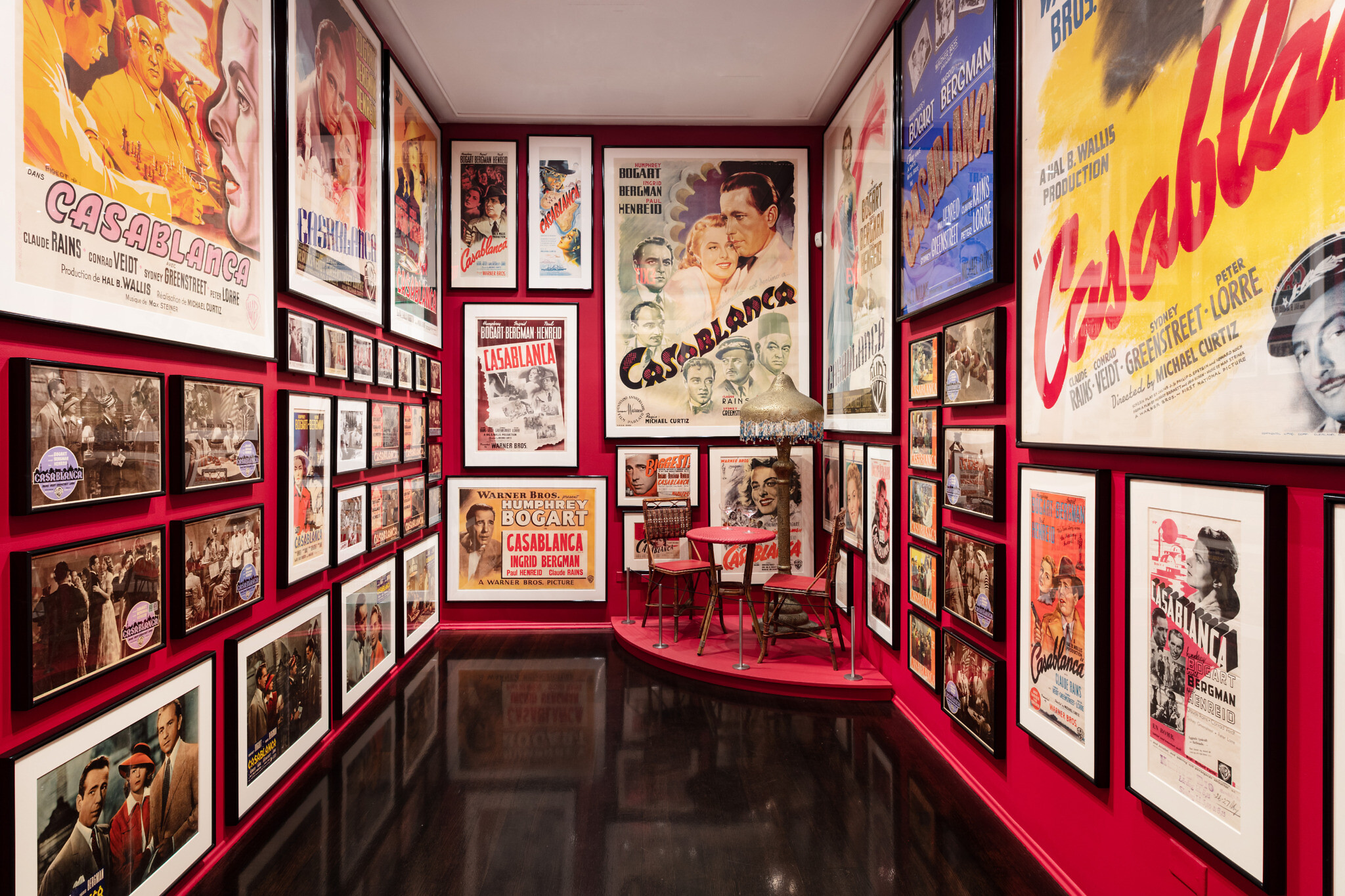

View of the ‘Casablanca’ room at ‘The Ronald S. Lauder Collection’ on view at Neue Galerie New York. (Hulya Kolabas/Courtesy of Neue Galerie New York)
Price recently escorted Bergman’s twin daughters Isabella and Isotta Rossellini to see the display.
“I took them to see this work, their mother. They saw the passports. But to them it is just their mother,” Price said.





Art
Art and Ephemera Once Owned by Pioneering Artist Mary Beth Edelson Discarded on the Street in SoHo – artnet News
This afternoon in Manhattan’s SoHo neighborhood, people walking along Mercer Street were surprised to find a trove of materials that once belonged to the late feminist artist Mary Beth Edelson, all free for the taking.
Outside of Edelson’s old studio at 110 Mercer Street, drawings, prints, and cut-out figures were sitting in cardboard boxes alongside posters from her exhibitions, monographs, and other ephemera. One box included cards that the artist’s children had given her for birthdays and mother’s days. Passersby competed with trash collectors who were loading the items into bags and throwing them into a U-Haul.
“It’s her last show,” joked her son, Nick Edelson, who had arranged for the junk guys to come and pick up what was on the street. He has been living in her former studio since the artist died in 2021 at the age of 88.
Naturally, neighbors speculated that he was clearing out his mother’s belongings in order to sell her old loft. “As you can see, we’re just clearing the basement” is all he would say.


Photo by Annie Armstrong.
Some in the crowd criticized the disposal of the material. Alessandra Pohlmann, an artist who works next door at the Judd Foundation, pulled out a drawing from the scraps that she plans to frame. “It’s deeply disrespectful,” she said. “This should not be happening.” A colleague from the foundation who was rifling through a nearby pile said, “We have to save them. If I had more space, I’d take more.”
Edelson’s estate, which is controlled by her son and represented by New York’s David Lewis Gallery, holds a significant portion of her artwork. “I’m shocked and surprised by the sudden discovery,” Lewis said over the phone. “The gallery has, of course, taken great care to preserve and champion Mary Beth’s legacy for nearly a decade now. We immediately sent a team up there to try to locate the work, but it was gone.”
Sources close to the family said that other artwork remains in storage. Museums such as the Guggenheim, Tate Modern, the Museum of Modern Art, the Brooklyn Museum, and the Whitney currently hold her work in their private collections. New York University’s Fales Library has her papers.
Edelson rose to prominence in the 1970s as one of the early voices in the feminist art movement. She is most known for her collaged works, which reimagine famed tableaux to narrate women’s history. For instance, her piece Some Living American Women Artists (1972) appropriates Leonardo da Vinci’s The Last Supper (1494–98) to include the faces of Faith Ringgold, Agnes Martin, Yoko Ono, and Alice Neel, and others as the apostles; Georgia O’Keeffe’s face covers that of Jesus.


A lucky passerby collecting a couple of figurative cut-outs by Mary Beth Edelson. Photo by Annie Armstrong.
In all, it took about 45 minutes for the pioneering artist’s material to be removed by the trash collectors and those lucky enough to hear about what was happening.
Dealer Jordan Barse, who runs Theta Gallery, biked by and took a poster from Edelson’s 1977 show at A.I.R. gallery, “Memorials to the 9,000,000 Women Burned as Witches in the Christian Era.” Artist Keely Angel picked up handwritten notes, and said, “They smell like mouse poop. I’m glad someone got these before they did,” gesturing to the men pushing papers into trash bags.
A neighbor told one person who picked up some cut-out pieces, “Those could be worth a fortune. Don’t put it on eBay! Look into her work, and you’ll be into it.”
Follow Artnet News on Facebook:
Want to stay ahead of the art world? Subscribe to our newsletter to get the breaking news, eye-opening interviews, and incisive critical takes that drive the conversation forward.
Art
Biggest Indigenous art collection – CTV News Barrie
[unable to retrieve full-text content]
Biggest Indigenous art collection CTV News Barrie





Source link
Art
Why Are Art Resale Prices Plummeting? – artnet News


Welcome to the Art Angle, a podcast from Artnet News that delves into the places where the art world meets the real world, bringing each week’s biggest story down to earth. Join us every week for an in-depth look at what matters most in museums, the art market, and much more, with input from our own writers and editors, as well as artists, curators, and other top experts in the field.
The art press is filled with headlines about trophy works trading for huge sums: $195 million for an Andy Warhol, $110 million for a Jean-Michel Basquiat, $91 million for a Jeff Koons. In the popular imagination, pricy art just keeps climbing in value—up, up, and up. The truth is more complicated, as those in the industry know. Tastes change, and demand shifts. The reputations of artists rise and fall, as do their prices. Reselling art for profit is often quite difficult—it’s the exception rather than the norm. This is “the art market’s dirty secret,” Artnet senior reporter Katya Kazakina wrote last month in her weekly Art Detective column.
In her recent columns, Katya has been reporting on that very thorny topic, which has grown even thornier amid what appears to be a severe market correction. As one collector told her: “There’s a bit of a carnage in the market at the moment. Many things are not selling at all or selling for a fraction of what they used to.”
For instance, a painting by Dan Colen that was purchased fresh from a gallery a decade ago for probably around $450,000 went for only about $15,000 at auction. And Colen is not the only once-hot figure floundering. As Katya wrote: “Right now, you can often find a painting, a drawing, or a sculpture at auction for a fraction of what it would cost at a gallery. Still, art dealers keep asking—and buyers keep paying—steep prices for new works.” In the parlance of the art world, primary prices are outstripping secondary ones.
Why is this happening? And why do seemingly sophisticated collectors continue to pay immense sums for art from galleries, knowing full well that they may never recoup their investment? This week, Katya joins Artnet Pro editor Andrew Russeth on the podcast to make sense of these questions—and to cover a whole lot more.
Follow Artnet News on Facebook:
Want to stay ahead of the art world? Subscribe to our newsletter to get the breaking news, eye-opening interviews, and incisive critical takes that drive the conversation forward.
-
Media13 hours ago
DJT Stock Rises. Trump Media CEO Alleges Potential Market Manipulation. – Barron's
-
Media15 hours ago
Trump Media alerts Nasdaq to potential market manipulation from 'naked' short selling of DJT stock – CNBC
-
Investment13 hours ago
Private equity gears up for potential National Football League investments – Financial Times
-
News24 hours ago
Ontario Legislature keffiyeh ban remains, though Ford and opposition leaders ask for reversal – CBC.ca
-



 Sports18 hours ago
Sports18 hours ago2024 Stanley Cup Playoffs 1st-round schedule – NHL.com
-
Business24 hours ago
RCMP national security team investigating Yellowhead County pipeline rupture: Alberta minister – Global News
-



 Investment23 hours ago
Investment23 hours agoWant to Outperform 88% of Professional Fund Managers? Buy This 1 Investment and Hold It Forever. – The Motley Fool
-
Real eState5 hours ago
Botched home sale costs Winnipeg man his right to sell real estate in Manitoba – CBC.ca




